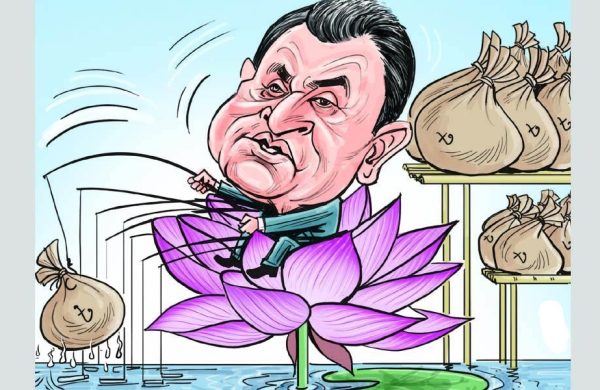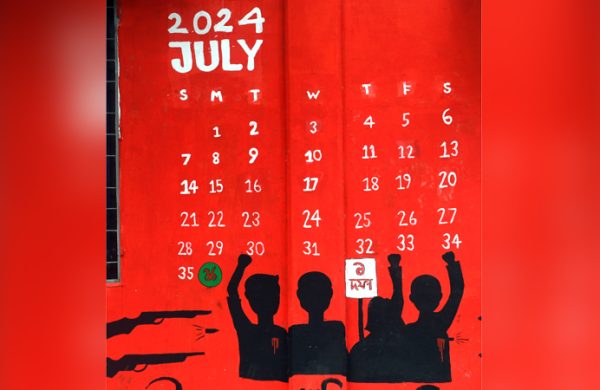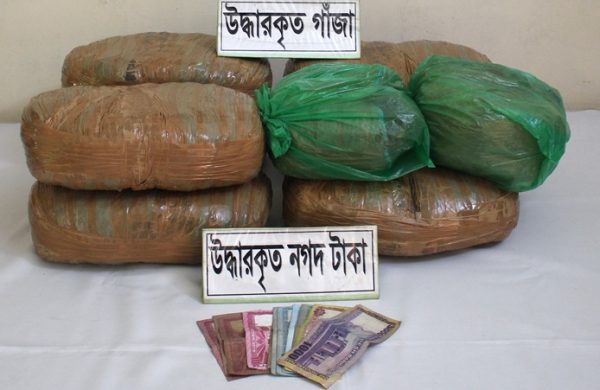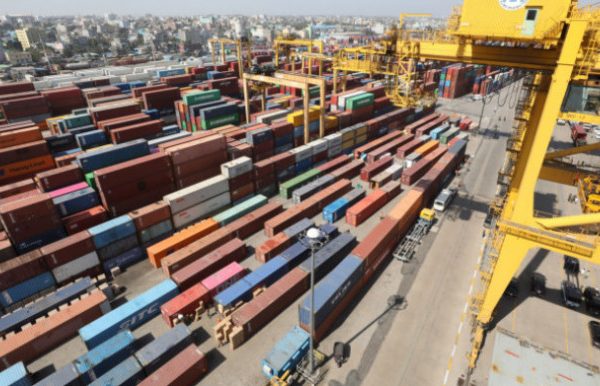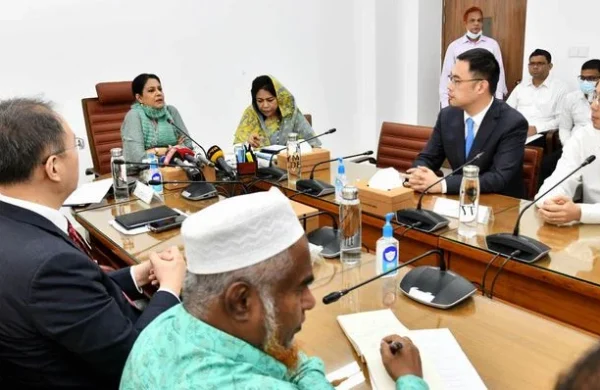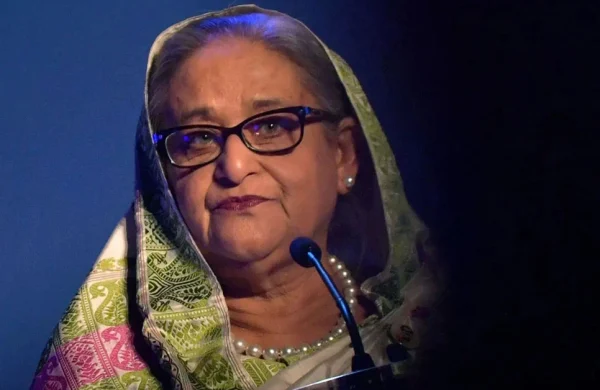Import dependency, financial mismanagement behind intolerable load shedding
- Update Time : Saturday, September 14, 2024

TDS Desk:
The massive ongoing 2000-megawatt (MW) load shedding has stemmed from severe financial mismanagement and excessive import dependence left by the Awami League government which could not afford to secure enough primary fuel to run the country’s power plants for the last three years.
Against the current demand of 15,000-16,000 MW of electricity, the country has the capacity to generate 24,000 MW using natural gas, coal, fuel oil and renewables, alongside 2,500 MW imported from India.
However, in reality, the country is now generating 10,500 MW on its own on top of imports — leaving a shortfall of around 2000 MW.
No money to buy fuel
So, why can’t the government run the remaining power plants that use coal, gas or oil? Simply put, it lacks the funds to import sufficient primary fuel.
Due to heavy reliance on imported fuel to run Bangladesh’s energy sector, the country now requires $5.7 billion annually to cover the cost of power from India, as well as Liquefied Natural Gas (LNG), coal, and petroleum products for power generation.
Of this amount, Adani alone claims $1.2 billion for 1500 MW of power imports, whereas it costs around $400 million more to import another 1100 MW from India.
The government’s outstanding debts have reached a staggering Tk35,000 crore with private power producers and India’s Adani, along with $500 million owed to LNG suppliers and over $200 million to Chevron for gas supplies from the Bibiyana and Jalalabad fields, according to official sources.
All of this happened due to a massive hike in power generation cost — far exceeding the sales cost to such a degree that it will be a huge political challenge for the government to adjust the price.
The cost of power jumped to Tk11 per unit in the 2022-23 fiscal year against an average sale cost of around Tk8. The Awami League government had increased the power tariff several times in the last two years — but could not raise it enough to avoid public backlash. When the Awami League came to power in 2009, the average power generation cost was just Tk2.5 per unit.
Again, the power cost went up because of multiple reasons: Increasing reliance on imported fuels to generate power, the dollar crisis and devaluation of taka and several costly and unnecessary power deals like the Adani power or the Beximco’s Teesta Solar power project and lack of initiative to increase local gas and coal production.
Industry insiders suggest that the only way to overcome the crisis is to increase natural gas supplies by both imports and local production because gas is still the cheapest solution in the country.
Badly handled gas crisis
During the 15-year rule of the Awami League government, things were looking good till 2019 because, till that time, cheap local gas dominated power generation — keeping the cost of power under control. At that time 68% of power was being produced by gas.
Bangladesh’s impending gas crisis was well known for decades. Back in 2002, a national committee had outlined how gas production would peak and start to deteriorate in the coming decade.
Accordingly, the country peaked its gas production in 2018 with 2,700 million cubic feet per day (mmcfd). In the following year, the production dipped by 700 mmcfd.
To compensate for this shortfall, the government started importing LNG from the Middle East. Although LNG is significantly more expensive than local gas, blending it with local gas kept costs manageable.
But following the Ukraine war, LNG prices surged to $54 per million thermal units in 2022, up from $10-$12 previously. Prices dropped to $20-$30 the following year and have since decreased to $12. By now, the damage has been done to Bangladesh as the costly imports back then impacted its overall energy price.
Again, by now, the country’s reliance on local gas has decreased to 52% from 68% six years ago. Therefore, the need for LNG to keep up with the gas needs has increased significantly.
While the Awami League government succeeded in building the power infrastructure during its tenure, it did not pay attention to increasing its primary fuel production.
During its tenure, it involved Russian Gazprom with Bangladeshi Bapex to drill some oil and gas wells, which resulted in a small increase in gas production from certain fields.
The government failed to attract international oil companies in its bid to allow exploration of oil and gas in the Bay of Bengal while its venture to find new gas resources onshore remained very limited. In short, the government’s solution to solve the gas crisis was entirely focused on imports.
LNG imports cost Bangladesh around $2 billion a year.
No local coal mine developed
The government also did not pay attention to developing any of the country’s five coal mines — except for the Barapukuria field which has been producing small-scale coal for the last two decades.
The country’s coal deposits are significant but right now, other than the Barapukuria field, only the Phulbari field is ready for development. The government refrained from working on further developing any coal field on environmental and social concerns.
However, that did not stop the government from taking up massive coal power projects in Rampal near the Sundarbans, in Payra and in Matarbari — again based on imported coal. Of them, Rampal and Payra are partially generating power.
In fuel mix, the use of coal-based power has increased to 11% from just 2% in the last five years.
These power plants need more than a billion dollars of imported coal every year.
Following the Ukraine war, the price of coal also skyrocketed to $400 a tonne from a projected $100. As a result, the power generation cost of the Payra and Rampal plants rose to Tk15 instead of an expected Tk6-7 per unit.
Now, the Indonesian coal price has dropped to $120 a tonne.
Due to the high price of coal and the ongoing dollar crisis caused by financial mismanagement, the government has limited the import of coal needed for the Payra and Rampal plants.
Costly diesel-run plants
Between 2019 and 2023, the use of furnace oil (HFO)-based power increased to 21% from 16%, while diesel-based power decreased to 2.6% from 2.9%.
The cost of diesel power remains around $30 per gigajoule (GJ), compared to less than $12 per GJ for HFO-based power. This makes operating HFO-based power plants significantly more economical than diesel plants.
Given the financial crisis, the government should have fully shut down the diesel plants, which it did not. Diesel power plants have been shut down this year.
Unnecessary deals
Bangladesh struck a deal with Indian giant Adani in 2017. Adani developed a coal-based power plant at Godda at Jharkhand in India and started exporting 1500 MW of power to Bangladesh in 2023 — using imported coal.
This is a unique arrangement because they could have built the plant in Bangladesh and saved the transmission cost.
As per the agreement initially, Bangladesh would pay $0.038 or Tk3.26 per unit as a capacity charge, higher than any other power plant in Bangladesh. Its power price will be Tk9.09 per unit, which is 56% higher than other imported electricity. Ultimately, Adani’s power cost surged to Tk14 per unit last year due to high coal prices.
Even if Bangladesh does not take Adani’s power, it will have to pay $423.29 million as a capacity charge per year.
Adani’s deal was made at a time when Bangladesh had enough power projects in its pipeline. Its pricing compared to Indian power available from other sources was also very high.
In supplying power, the government gave Adani so much high priority that the local Payra and Rampal power plants functioned partially — while Adani generated power in full swing. But ultimately, due to the financial mess, the government today owes Adani $800 million in arrears.
Another example of an unnecessary deal is Beximco’s Teesta Solar power project. The 200 MW solar power project was awarded in 2016 but it came into operation in August 2023 — although it was supposed to come into operation in 2018.
The problem with the Teesta solar project is its price: 15 cents or Tk17 per unit. This price is higher than older solar power projects by 2 cents. The government could have renegotiated its price as Beximco was delaying it. But it did not.
Bangladeshi solar power projects remain one of the costliest in the world. Solar power in India costs 3 cents while Bangladesh’s lowest tariff remains around Tk11.
For Beximco, this solar project is so profitable that in its first year of production in the Tk3,000 crore project, it earned Tk634 crore. It projected profit within five years. In contrast, any legacy power project needs seven to eight years to recover costs.





